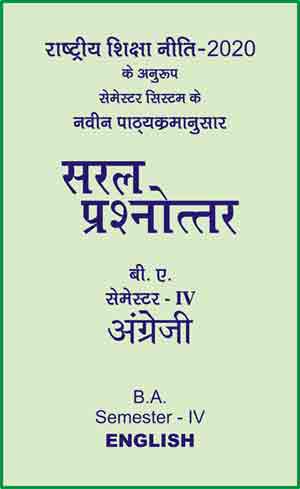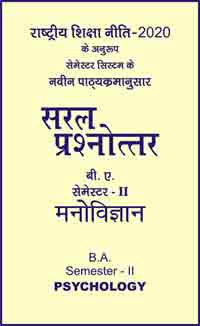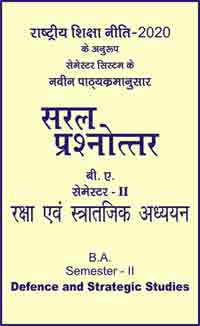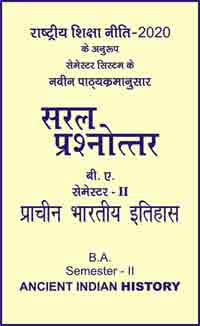|
बी ए - एम ए >> बीए सेमेस्टर-4 अंग्रेजी बीए सेमेस्टर-4 अंग्रेजीसरल प्रश्नोत्तर समूह
|
5 पाठक हैं |
|||||||
बीए सेमेस्टर-4 अंग्रेजी - सरल प्रश्नोत्तर
Unit-1
Chapter - 1
Introducing Translation
Brief Introduction
Translation is as old as human civilization. Since the dawn of civilization, we, human beings, have been using language to translate our thoughts and ideas. We use a set of symbols or codes to communicate or transfer an idea or thought or a feeling to the person whom we address during an act of communication. Here too we have translation. In this sense, we translate every day. With the evolution of human society, we became more anxious to know about the thoughts and feelings of people in distant places. Hence we used two sets of symbols and codes to transfer the thoughts and ideas of people speaking a different language to our own language. This gave rise to translation as we see and use it today
The story of translation dates back to the third millennium BC. The Babylon of Hammurabi's day (2100 B.C.) was a polyglot city, and much of the official business of the empire was made possible by writers who translated edicts into various languages. In India too our first writers were translators. Free translations and adaptations of epics like Ramayana and Mahabharata have shaped Indian literature in a big way. Moreover, Indian Literature until the nineteenth century consisted mainly of translations, adaptations, interpre- tations and retellings. Translations of literary works and knowledge texts on medicine, astronomy, metallurgy, travel, ship-building, architecture, philosophy, religion and poetics from Sanskrit, Pali, Prakrit, Persian and Arabic enhanced our awareness of the world.
In the Indian situation, the role of translation is very significant as it is the home to people speaking 22 recognized languages and hundreds of mother tongues and dialects. Every day in business and office communication, we are required to make use of English and one of our Mother tongues to communicate with people. So we are bilinguals by default and use translation as a means to communicate. It is through translation that people in the periphery and the centre, the dominant and the dominated culture: communicate with one another. We can say that India would not have been a nation without translation as we use translation to communicate and communication keeps us united as a nation.
The English word translation has been derived from the Latin word translation, which itself comes from trans- and latum together meaning "a carrying across" or "a bringing across. In other words, it is the business of carrying across a message/written content from one text to another, from one person to another and from one language (source language) to a different language (target language). It can happen within the same language (from one dialect to another dialect or from one form to another) or between languages. It is best seen as a communication process where the transfer of a message/written content from one language into a new language takes place.
However, poets engaged in the job of translation often think of translation as 'interpretation', 'taking a view', 'bringing to life', or 'transformation'. Whatever may be its meaning, every act of translation involves the expression of sense. A translation is a text that is considered to be different from the original (the source text) but it is also a fact that the source text and the translated text are the same in terms of the sense they convey. It is often said that translation gives new clothes to a piece of writing by putting it in a different form. This interactive relationship between source and translation goes on in the hands of mature translators of prose and drama but it is the best in poetry.
Translation is an interpretative process. The nature of translation depends upon the nature of the document. Translation of a technical or promotional document is easier and requires less skill and expertise than the translation of a text of literature. The vocabulary, grammatical rules and the sentence structures would match with the nature of the document, the source language and the target audience. A successful translation satisfies the needs of the target audience, either in terms of suitable structures or forms or in terms of the appropriate transfer of meaning from the source text to the target text.
Besides having equal expertise in the source language and the target language, a good translator should also have a flair for writing in the target language and be familiar with the socio-cultural context in which a text is set. A successful translator is not a mechanical translator of a text. S/he puts in his/her creativity to the fullest extent and goes into the soul of the content. We can visualize him/her as a co-creator of the target language text as the translated text he almost recreates the text reflecting his culture and personality.
While translating, a translator takes into account the lexicon, grammatical structure and cultural context of the text in the source language to understand the meaning built in the text and then transfers the same meaning to the text in the target language with the help of lexicon and grammatical structure appropriate to the target language and its cultural context. In this process, every care is taken to ensure that there is no or minimum loss of meaning. Earlier, faithfulness to the original text was considered to be one of the greatest responsibilities of the translators. But now, with the mushrooming of multiple cultures and languages and diversity of political views in a given context, the translator takes liberty with the original text to allow some accommodation or adaptation in order to keep pace with the sense or spirit of the original. Accommodation is inevitable in practice if the translation is to maintain the essence, impact, and effect of the text in the source language. This is particularly true of poetry where the text is highly emotive and artistic in nature. A translator may come across a couple of words which are culturally-rooted and thus untranslatable. Such words are difficult to be translated if the cultural context is missing. But the fact is that individual words may not be translatable, but language is.
|
|||||














